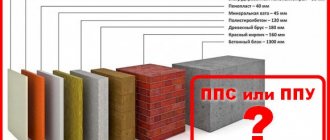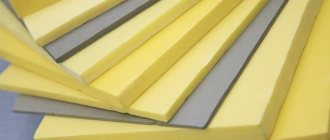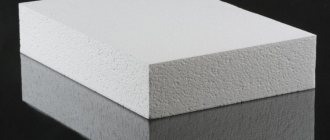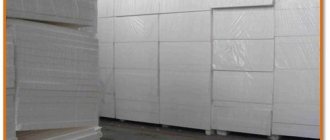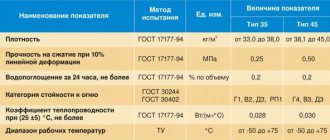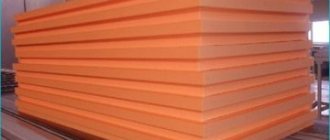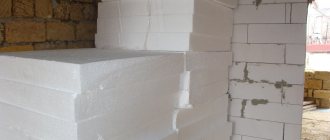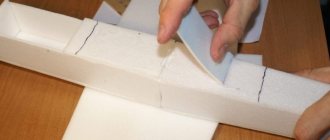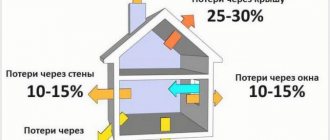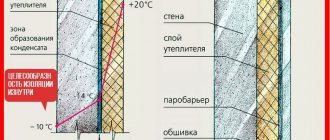Polystyrene foam, extruded and regular polystyrene foam are considered one of the most popular materials used in many areas of construction, from insulation work to packaging of fragile goods. But when is it better to use polystyrene foam and when to use polystyrene foam? It is difficult for the average person, who rarely encounters repair and construction work, to determine how polystyrene foam differs from expanded polystyrene. First of all, it’s worth understanding what each of these materials is.
Production of polystyrene foam and expanded polystyrene
Polystyrene foam is a synthetic, plastic material. In essence, it is a small shell filled with gas. Made from different types of polymers. Thanks to this, it is possible to create types of materials with different properties.
So, you can find the following types of foam on sale:
- polyurethane,
- phenol-formaldehyde,
- polyvinyl chloride,
- urea-formaldehyde,
- polystyrene.
Polystyrene foam made from different materials differs in technical characteristics and resistance to different types of influence (mechanical, chemical, influence of natural factors, etc.). Depending on the properties, the scope of its application differs, which allows you to choose the foam that is best suited for specific conditions. The most famous is polystyrene foam, or simply expanded polystyrene, since this type of material is most often used in domestic conditions.
Expanded polystyrene foam and expanded polystyrene are the same material. If you extrude the polymer, you get one of the varieties of expanded polystyrene - penoplex.
Types of polymer insulation
Polystyrene foam and extruded polystyrene foam occupy a leading position in the popularity of materials used as insulation. The reason for this is that insulation made from such materials does not require ventilation. They both have a fairly dense structure and high vapor permeability. Moreover, these materials are good for their versatility. For example, Penoplex is used as insulation in both individual and mass construction. Polystyrene foam is very fragile , so it is suitable for external insulation.
Comparison of manufacturing methods for polystyrene and polystyrene foam
Polystyrene foam and expanded polystyrene are made from the same material, but production technologies are very different . Conventional polystyrene foam is made by the “steaming” method. Microgranules of polymer material are placed in a mold and then exposed to water vapor. Under the influence of high temperature, the surface of the granules begins to increase, and larger micropores form on it. The impact continues until the foam fills the entire block mold.
Penoplex is made using the extrusion method. In this case, before extruding the material, it is first melted, then a foaming reagent is added. After this, you can extrude the mass - pass it through a special molding tool. In this case, the cells are filled with natural gas, or carbon dioxide if fire-resistant polystyrene foam is produced. This method of extruding the polymer makes it possible to achieve a more even structure of the finished material, since the cells remain closed.
Description of insulation and terminology
The possibilities of using polymers in construction have long been of great interest, since there was a chance to reduce the costs of constructing buildings without losing their operational properties. This approach would make it possible to support large volumes of construction, because polymer elements can be produced in significant quantities.
Polystyrene foam was invented in the mid-twentieth century. Almost immediately, industrial production of the innovative material as heat-insulating panels for construction needs was launched. The following advantages contributed to the growing popularity of this insulation :
- Low density and easy installation. The weight of the sheets is so small that transporting them is easy and cheap. Working with the material is quite simple. The sheet can be held at the desired height without much effort. High machinability further facilitates construction work. The most common cutting method is using a blade tool and heated metal wire.
- Low level of fluid absorption. Contrary to popular belief, polystyrene foam, which does not contain fibers, practically does not absorb moisture. Even when the material is completely immersed in water, the volume of absorbed liquid does not exceed 0.4%. Tests on the impact of groundwater showed an even better result - no more than 0.1%.
- Environmentally friendly. According to the European Chemicals Agency, polystyrene foam has no carcinogenic, mutagenic or other toxic effects. And in accordance with the British environmental impact scale, it has the highest safety class.
- High durability. Studies have shown that the service life of the material can exceed 80 years when used under conditions of significant changes in temperature and humidity.
- Biological stability. The material does not support the development of fungi and microorganisms. It is of no interest or nutritional value to rodents.
- Good sound insulation properties. Foam plastic used in interfloor ceilings and walls provides effective attenuation of sound waves created by construction work, impacts, furniture movement and vibrations of household appliances.
There are several types of polymers that belong to polystyrene foam.
Foam plastics include several different foamed plastic masses. The most popular polymers are :
- polystyrene;
- polyvinyl chloride;
- polyurethane;
- phenol-formaldehyde resins;
- urea-formaldehyde resins.
For use in certain conditions and to solve specific problems, the material is made from the appropriate plastic.
In addition, differences in the processing technology of raw materials make it possible to obtain a product with the desired properties:
- density;
- strength;
- resistance to various influences.
In this video you will learn the pros and cons of polystyrene foam:
Comparison of polystyrene foam and extruded polystyrene foam
Despite the similar composition, insulation materials are manufactured using completely different technologies, and therefore differ significantly in technical characteristics.
Expanded polystyrene is only 2% polymer. The rest is occupied by air, hermetically sealed inside the capsules and therefore remaining motionless.
As you know, it is precisely this immovable air layer that provides good thermal insulation. The thermal conductivity of expanded polystyrene is lower than that of wood (3 times) and even lower than that of brick (17 times). Due to this feature, to insulate walls 21 cm thick, you will need an insulation board 12 cm thick.
Penoplex, due to its higher density, is superior to polystyrene foam in terms of thermal conductivity, but the difference is small. So, if the thermal conductivity of foam plastic is 0.04 W/mK, then the corresponding parameter for penoplex is 0.032 W/mK. If we talk about materials, then for thermal insulation, instead of a 25 cm thick polystyrene foam board, you can take a 20 cm thick polystyrene foam board, and the result will be the same. However, these indicators may vary depending on the manufacturer and the specific brand of materials.
Another advantage of the material is soundproofing . In order to achieve complete sound insulation, you will need a thin slab of 3 cm.
The indisputable advantage of conventional polystyrene foam is its water resistance. The maximum volume of moisture absorption is no more than 3% of the mass of the material itself. Moreover, even with maximum moisture absorption, the characteristics of the foam do not change.
If you extrude the polymer, you can achieve even better results. Thus, the maximum moisture absorption rate for penoplex does not exceed 0.4%. Therefore, when insulating a façade with extruded polystyrene foam, vapor barrier can be neglected. If the choice fell on polystyrene foam, then it is better to carry out a vapor barrier.
If we talk about strength, then penoplex wins here as a denser material. Due to large micropores, foam plastic inevitably reduces its resistance to various influences over time.
The compressive strength of polystyrene foam is only 0.2 MPa, while that of extruded polystyrene foam is 0.5 MPa. If we compare the compressive strength of two slabs of the same thickness, then the foam plastic turns out to be 4 times less strong.
Pros and cons of Extruded Polystyrene Foam
Extruded polystyrene foam is a thermal insulation material characterized by a uniform structure. It consists of small closed cells. To obtain an EPP board, polystyrene granules are mixed under high pressure. In this case, a foaming agent is gradually introduced.
In the photo - extruded polystyrene foam
The advantages of the material include:
- High heat retention rates . The thermal conductivity coefficient is 0.031-0.042. Since it is high, it is possible to reduce the consumption of polystyrene foam several times.
- Not exposed to moisture . The material is based on a component such as polystyrene. During processing, cells are formed that are filled with air. Thanks to this, the insulation does not absorb water. Thus, extruded polystyrene foam can be used when arranging foundations, swimming pools and flat roofs. Due to its water resistance, the material is characterized by high heat-saving properties that remain unchanged throughout its entire service life.
- Thermal insulation material is not affected by rot, mold and fungi . Thus, its structure remains unchanged.
- High compressive strength . When mechanical or temperature factors influence polystyrene foam, it remains in the same state.
- High noise insulation . Since during the production of polystyrene foam its cells are filled with air, this increases its sound insulation. By using material for thermal insulation of a house, it is possible to improve its sound insulation by 35 dB.
- High fire safety . The insulation in question does not contribute to the spread and maintenance of a fire. In addition, polystyrene foam is a self-extinguishing heat insulator. Thus, it can even be used to put out a fire.
- Affordable price . Due to its low cost, such insulation will be available to many people.
- Does not enter into a chemical reaction. The insulation is not influenced by lime, salt, gypsum, roofing felt, cement, concrete, soda, alcohol. In addition, it will be able to withstand short-term contact with food and machine waste.
- Ecological cleanliness . By using extruded polystyrene foam, you don’t have to worry about your health.
- Long service life . Since the extrusion method was used to produce polystyrene, this guarantees the material high performance characteristics. Its properties remain unchanged for 50 years. Therefore, it is not necessary to often replace the old insulation with a new one.
In the video - extruded polystyrene foam:
Extruded foam is not without its disadvantages. When it comes into contact with complex carbons, it begins to crumble. It is negatively affected by UV rays upon direct contact. When heated to 25 degrees, 1 m3 of insulation will contain 104 micrograms of styrene. It will not be necessary to use it when thermally insulating facades with a high degree of exploitation, since a denser material will be needed here.
What foam ceiling tiles are and where they are used can be found in this article.
But how to glue polystyrene foam to concrete and what adhesive material should be used is described in this article.
This information will help you understand how penoplex plastering occurs on the outside and with what material: https://resforbuild.ru/sypuchie-materialy/shtukaturka/po-penopleksu.html
But how facade plastering on polystyrene foam occurs and how difficult it is to do it is described in detail in this article.
Expanded polystyrene (penoplex)
The extrusion method produces extruded polystyrene foam; the method causes the polymer to first melt, after which a viscous mass is formed. From the solid state, the granules transform into a viscous-ductile state , resulting in a single liquid-phase substance with a solid and durable microstructure.
Extruded polystyrene foam looks like a mass of closed cells containing gas inside; it is much stronger than polystyrene foam. Expanded polystyrene cells are impenetrable; they do not have micropores, like polystyrene foam, so water or gas cannot penetrate inside the cells. The cells of polystyrene foam look like a solid mass; air or water can penetrate only from the cut side of the side surfaces. In its general condition, the material cannot absorb moisture, steam and much more from the outside.
We often call expanded polystyrene foam polystyrene, since the domestic brand of extruded polystyrene foam is produced with this name; in fact, they are the same thermal insulation material . The polyspan brand is also widespread; it is used in various industries: agriculture, in the construction of runways, when laying oil and gas pipelines, it is used to make a thermal insulation layer in civil and industrial building structures.
Since mass production, penoplex has become widely used in construction as a high-strength thermal insulation material. It is always used for exterior work, since it is not suitable for internal insulation; polystyrene foam can release styrene at high temperatures. The main characteristics of the material are:
- Increased compressive and bending strength.
- High density penoplex.
- Doesn't crumble like polystyrene foam.
- Thermal conductivity 0.028 W/m K.
- Absorbs moisture no more than 3% of its mass; this indicator does not affect its thermal insulation, strength and structure.
- Has excellent sound insulation.
- Penoplex is not afraid of insects and rodents.
- Doesn't rot and doesn't burn well.
Comparative characteristics
Let's compare the two materials based on the characteristics described above. Expanded polystyrene is the best insulation material, since its thermal conductivity is lower, which means that it transmits heat less well and retains it in the room.
Expanded polystyrene is a better insulation material than polystyrene foam
In addition, the strength of the first material is much higher than polystyrene foam. And the ability to repel water too. However, the materials have one essentially identical property - they are both flammable. It is worth considering another factor that characterizes materials – shrinkage. The higher it is, the worse the material is as insulation. So, for polystyrene foam this indicator is quite high, it wrinkles easily and is susceptible to mechanical stress. It is especially vulnerable to direct sunlight. But expanded polystyrene copes much better with mechanical stress and ultraviolet rays. This is due to the way it is produced and the material is processed.
Application area
The material began to be widely used in the construction of railways and roads. It is also used for thermal insulation of plinths and foundations, for thermal insulation of layered masonry, etc. EPP is also used for thermal insulation of sports fields, skating rinks and refrigeration units.
In addition to being used in the construction of roads, EPP is also used in the construction of runways. Extruded polystyrene foam has simply excellent technical characteristics for this. The density of this material is 38-45 kg/m³, high compressive strength, low thermal conductivity and water absorption, low specific gravity. The thermal conductivity value of extruded polystyrene foam is close to the thermal conductivity coefficient of air.
The use of extruded polystyrene foam in the construction of buildings can significantly reduce their weight, which leads to significant savings, both due to the fact that the structure does not require such a massive foundation, and because special equipment consumes less fuel during the work.
Extruded polystyrene foam is a hardened foam in its structure. It perfectly resists the effects of aggressive mineral environments and moisture. By the way, polystyrene foam, which was obtained using a non-press method, has the best chemical resistance. Although in terms of mechanical properties it is inferior to the version obtained by the pressing method.
Extruded polystyrene foam is also good because it resists fungus and putrefactive bacteria; rodents are also not afraid of it. Its operating temperature is 60-75°C. This material also has a disadvantage - it contains a flammable blowing agent. This, for example, could be isopentane. To reduce the effect of the blowing agent, flame retardants are introduced.
